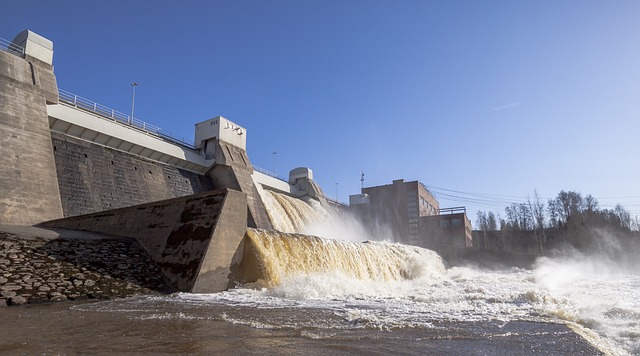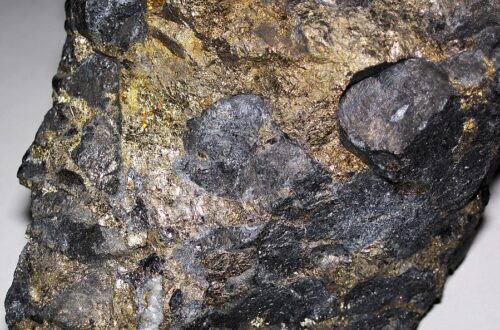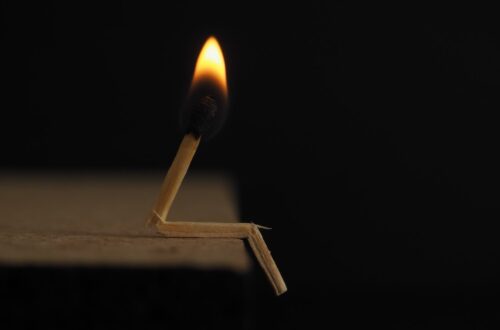
Current Interesting Facts About Electricity
Interesting Facts About Electricity
Did you know that electricity is the flow of electrons? It’s a type of energy that is produced by the movement of charged particles. These are just a couple of interesting facts about electricity, but let’s unearth more, keep reading.
Electricity is a naturally occurring phenomenon that can be generated artificially. It is a form of energy that can be used to power electrical devices and appliances. Electricity is also used in the production of light and heat.
Here are some more interesting fun facts about electricity:
Benjamin Franklin
Benjamin Franklin was one of the Founding Fathers of the United States. He was a renowned polymath and a leading author, printer, political theorist, politician, freemason, postmaster, scientist, inventor, humorist, civic activist, statesman, and diplomat.
As a scientist, he was a major figure in the American Enlightenment and the history of physics for his discoveries and theories regarding electricity. He invented the lightning rod, bifocals, and the Franklin stove.
He facilitated many civic organizations and founded both the Library Company of Philadelphia and The Academy and College of Philadelphia which became the University of Pennsylvania.
Nikola Tesla was one of the most important inventors of the 20th century. He is best known for his contributions to the development of electricity and his work with alternating currents (AC).
Here are some interesting facts about Tesla and his work:
Tesla was born in 1856 in what is now Croatia. He moved to the United States in 1884 and became a citizen in 1891.
Tesla’s first job in America was working for Thomas Edison. However, the two men had very different ideas about how electricity should be used and generated, and they soon parted ways.
Tesla is credited with inventing the AC induction motor, the type of motor used in most household appliances today. He also developed the Tesla coil, a device that produces high-frequency alternating current.
An electric current is the flow of electric charge. It is measured in amperes and its symbol is I. The SI unit of electric current is the ampere, which is equal to a flow of one coulomb per second. The electric current can be either alternating current (AC) or direct current (DC).
AC is the form of electricity that is used in most homes and businesses. DC is the form of electricity that is used in batteries.
What is an opposite charge?
When two objects are rubbed together, they create static electricity. This happens when electrons are transferred from one object to the other. The object that loses electrons becomes positively charged, while the object that gains electrons becomes negatively charged.
Opposite charges are attracted to each other, while objects with the same charge repel each other. This is because when two positive charges are close together, their protons repel each other.
But when positive and negative charges are close together, their protons and electrons attract each other.
The force between two opposite charges is called an electrostatic force. This is the force that makes your hair stand up when you rub a balloon on your head. It’s also the force that makes lightning!

The first power lines were built in the United States in 1882. The idea for electricity came from British scientist Michael Faraday, who discovered that when a wire is moved through a magnetic field, an electric current is produced.
In 1882, American inventor Thomas Edison built the first power plant in New York City. His power plant used coal to generate electricity. Soon after, other power plants were built using waterfalls to generate electricity.
The first power lines were built to carry electricity from the power stations to cities. The first transcontinental power line was built in 1901. It carried electricity from Niagara Falls to New York City.
Did you know that power lines are one of the leading causes of house fires? In the United States, there are about 40,000 house fires caused by power lines each year.
These fires result in about 500 deaths and 1,500 injuries. Power lines are also responsible for about 10% of all wildfires.
There are two types of power lines: transmission lines and distribution lines. Transmission lines carry electricity from power plants to substations. Distribution lines carry electricity from substations to homes and businesses.
Overhead power lines are usually made of aluminum or steel. Underground power lines are usually made of copper or plastic. Power line voltage can range from 120 volts to 765,000 volts.
Electricity is the set of physical phenomena associated with the presence and motion of electric charge. Although initially considered a phenomenon separate from magnetism, since the development of Maxwell’s equations both are recognized as part of a single phenomenon: electromagnetism.
Various common phenomena are related to electricity, including lightning, static electricity, electric heating, electric discharges, and electrochemistry.
Electric fields are created by electrically charged particles and act on other charges in the field. The electric field acts on Charges that experience a force when they are in an electric field.
The force can be attractive or repulsive, and it pushes or pulls charges in a direction that reduces the potential energy of the system. Electric fields obey an inverse square law: The strength of the field decreases with
Electricity Travels at The Speed of Light
Did you know that electricity travels at the speed of light? Yep, that’s right – electric current can move almost instantaneously. In fact, it’s one of the fastest-moving things in the universe!
Electricity is created when electrons flow through a conductor, like a metal wire. The electrons are constantly moving, but they don’t usually go anywhere because they get stuck to the atoms in the metal.
When we want to use electricity, we provide a path for the electrons to flow from one atom to another. This can be done by creating electric circuits – a path that the electrons can flow around.
The force that makes electricity move is called voltage. Voltage is measured in volts (V). The higher the voltage, the more force there is and the faster the electrons will move. Usually, we use low-voltage electricity in our homes – around 240 volts.
When Was The First Light Bulb Invented?

In 1878, the first light bulb was invented by Thomas Edison. The original light bulb was made of a piece of carbonized bamboo and a platinum wire. The first light bulbs were not very bright and lasted only a few minutes before burning out.
In order to make them last longer, Edison began experimenting with different materials. He eventually found that a filament made of carbonized paper worked the best. The first commercially available light bulbs were produced in 1879 and had a lifespan of about 40 hours.
What is The Speed of Light?
Light is electromagnetic radiation within a certain portion of the electromagnetic spectrum. The speed of light in a vacuum is about 186,282 miles per second (299,792 kilometers per second), making it one of the fastest phenomena in the universe.
In 1799, French physicist Pierre-Simon Laplace proposed that light was transmitted instantaneously.
However, his theory was later disproven by experiments that showed that light does indeed have a finite speed. In 1849, Léon Foucault conducted an experiment showing that light travels more slowly than had previously been thought.
Albert Michelson and Edward Morley later performed the definitive experiment showing that the speed of light is independent of the motion of its source.
The speed of light is not just fast—it’s constant. No matter how fast an object is moving, it will always see light moving at the same speed.
A bolt of lightning is a discharge of electricity that occurs when the atmosphere is highly charged with electricity. It typically happens during thunderstorms, when the air is filled with moisture and particles of dust and dirt.
The electrical charge builds up in the clouds until it becomes so strong that it causes a discharge, which we see as a bolt of lightning.
Lightning can be extremely dangerous. It can cause fires and damage buildings, and it can kill people. In the United States, about 50 people are killed by lightning each year. There are some interesting facts about lightning bolts.
A single lightning bolt is usually about three-quarters of an inch in diameter, but it can be up to a foot in diameter. They can travel at speeds of up to 60,000 miles per hour, and they can reach temperatures of 50,000 degrees Fahrenheit.
Solar panels are a type of renewable energy source that converts sunlight into electricity. Solar panels are made up of many small solar cells, which are connected together to form a panel.
Solar panels can be used to power homes and businesses, and can even be used to generate electricity for entire communities.
Here are some interesting facts about solar panels:
- Solar panels have been used for over 50 years. The first solar panel was developed in 1954 by Bell Laboratories.
- Solar panels are made up of silicon, which is a very common element on Earth. In fact, silicon is the second most abundant element in the Earth’s crust after oxygen.
- Solar panels are capable of converting sunlight into electricity with an efficiency of around 15%.
South America is home to a variety of electric eels, which are able to generate up to 600 volts of electricity. These eels use their electric abilities for a variety of purposes, including self-defense, hunting, and navigation.
Electric eels can generate such high voltages because they have a unique anatomy that includes three pairs of abdominal organs capable of storing and producing electricity.
When an electric eel feels threatened, it will discharge its stored electricity in order to stun its attacker. Electric eels are not the only creatures in the animal kingdom that can produce electricity.
There are also electric rays, electric fish, catfish, and even some insects that can generate small amounts of electrical energy.
The world’s biggest source of electricity

Electricity is the flow of electrical power or charge. It is a basic part of nature and it is one of the most widely used forms of energy. The world’s largest source of electricity is hydroelectric power.
Hydroelectricity accounts for about 16% of the world’s total electricity production. Hydroelectric energy is produced by the movement of water in rivers and oceans. The force of falling water spins the turbines which are connected to generators. The generators create electricity.
Hydroelectric power plants are often located in mountainous regions where there is a large amount of fast-flowing water.
Electric vehicles are powered by electricity from batteries, and they were first introduced in the early 1800s. The earliest electric vehicles were actually trains, and they were used to transport coal and other minerals.
The first electric car was built in 1828 by Anyos Jedlik, a Hungarian inventor. Jedlik’s car was powered by a battery and could reach speeds of up to 6 miles per hour.
In the late 1800s, electric cars became popular among the wealthy because they were much quieter than gasoline-powered cars.
Electric vehicles fell out of favor in the early 1900s as gasoline-powered cars became more affordable and reliable.
However, electric cars are making a comeback today as people are looking for more environmentally friendly transportation options. Electric cars are becoming increasingly popular in Europe and Asia, and their popularity is expected to continue to grow in the coming years.
What fossil fuels produce electricity?
Fossil fuels such as coal, oil, and natural gas are non-renewable resources that have formed over millions of years from the remains of plants and animals. These materials are burned to generate electricity.
The burning of fossil fuels releases harmful pollutants into the atmosphere including carbon dioxide, sulfur dioxide, and nitrogen oxides. These emissions contribute to climate change and have been linked to respiratory illnesses such as asthma.
Despite the negative impacts of burning fossil fuels, they still remain the primary source of electricity generation in the United States.
About 67% of electricity in the US is generated from natural gas, 27% from coal, and 7% from oil.
Renewable energy sources such as solar and wind power make up a small percentage of electricity generation.
Nuclear power plants are responsible for generating 20% of the world’s electricity.
There are 442 nuclear reactors in operation around the world, with a total capacity of over 383,000 megawatts (MW).
The first nuclear power plant was built in Obninsk, Russia in 1954.
Nuclear power plants do not produce greenhouse gases or other air pollutants.
Uranium is the fuel most commonly used in nuclear reactors.
Here we will end with some final interesting facts about electricity:
-In the United States, the average home uses about 934 kWh of electricity per month. The average commercial business uses about 8,363 kWh per month.
-The first public power plant in the United States was built in 1882 in New York City.
-Thomas Edison built the first power plant in 1879. It was called the Pearl Street Station and it provided electricity to 85 customers in lower Manhattan.
-Electricity is measured in watts and one watt is equal to one joule per second.
Now read my interesting facts about X-Rays article.





2 Comments
Pingback:
Pingback: